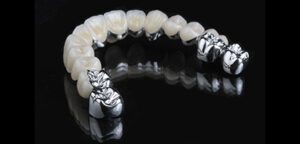We’re grateful to have Dean Tassey, our CAD/CAM manager here at Keating Dental Lab, with us discussing CAD/CAM technology and the growth of digital dentistry. As this sector of the industry continues to grow, it’s going to have more of a positive impact on the quality of dental restorations. We also talk about getting your dental practice into digital scanners, and the factors to consider.
Using Digital Scans to Create Dental Restorations
Using CAD/CAM technology in a dental lab has been a paradigm shift for the industry. Over the last seven years, we’ve had many more digital files sent to us and that changes the atmosphere. As more dentists begin to retire, the younger doctors are moving to digital. This means that the previous method of cast and invest, and opaque it are no longer as relevant.
The Benefits of Using a Digital Scanner in Your Dental Practice
When using a digital scanner, it will keep you from moving forward if a scan isn’t clear enough. Margins are a critical piece of a dental restoration, which means that having a scanner that can automatically tell you if your margins are clear can save you time and the patient some frustration. Being able to check the result immediately is one of the biggest benefits.
We care about the fit first. Function and aesthetics are certainly important, but without proper fit, the functionality and aesthetics are irrelevant. This is why the impression is so important. With the traditional impression process, there is a larger margin of error. But with digital scanners, accuracy is easier to achieve.
Using a digital scanner can help improve your impressions, which will help your practice in the long run. The dental restoration process will be more efficient, and your patients will leave with the best dental restorations possible.
The CAD/CAM Process for Dental Restoration Cases
The benefit of using digital scans is that we can immediately see if there are any issues. This means we can create the best dental restoration possible.
There is also less prep time with digital scans, so we can load it into the design software and begin right away. Each internal scanner has their corresponding software, and each have a feature to preview the scan. For Trios and Sirona scanners, the digital scan is in full color, so we can easily distinguish the tissue, neighboring teeth, and other elements.
The Trios scanner, for example, has a shade assisting tool that is especially helpful when analyzing the scan. We can mark points on adjacent dentition, and it will give us the shape. This is especially helpful when thickening the margins, as they can get distorted at times.
Learning from Challenging Cases
We’ve had a number of challenging cases since we began taking digital scans, and this has helped us really refine our process and communication with doctors to create the best dental restoration possible.
One of the most common problems we encounter is with the articulation. Some scanners and their accompanying software will combine the arches in a preview scan, and the computer aligns to that bite. Due to it being a lower resolution scan, it’s important to check how the computer automatically placed the arches within the mouth. Ideally, this would be to go from the mid-line back for a quadrant.
Essentially, the more data the computer has, the more accurate this alignment is going to be for the bite. With higher resolution scans, this is going to be more accurate. As Dean states, “It’s [about] putting faith into technology, and the more data that technology has the more faith you can have in it.” (Emphasis added.) As scanners begin to have higher and higher resolutions, these difficult cases will be minimized.
If your patient has a crown adopted to a partial, their restoration will have a better result if you choose to do a traditional impression. The digital scanners still have some trouble picking up all the details, which means you’ll likely need to do more adjustments.
Choosing a Digital Scanner for Your Dental Practice
When choosing a scanner for digital impressions for your practice, there are a few things to consider. While cost is going to be a factor, some the of the seemingly more affordable scanners will end up coming in at the same price as a higher-end scanner once the additional costs are added on.
Dean prefers working with Trio scanners, as they are produced by the same company that developed 3Shape, the design software we use. This means the integration between the lab and the doctor is more seamless, which is always helpful.
3M has also developed some stellar digital scanners in their True Def line, though they are more expensive. Many doctors prefer the Itero, which is very detailed and has a smaller wand. These two companies are the most popular among our dentists, and the Trio scanner is a close third.
The Factors to Consider with Digital Scanners
Digital scanners are a significant investment, and it’s important to take your time when choosing which brand to invest in. Factors like wand size, file type, service, and yes, price are all important to consider.
If possible, head to convention where you can hold the cameras and see how they feel. There isn’t necessarily a right or wrong scanner; it’s what will work best for you. With where the industry is now, you have options. Choose what will work best for your practice, and you’ll get a return on your investment over time.
We hope you found this discussion helpful in regards to digital scanners, and don’t hesitate to reach out if you have any questions. We’re always looking for topics that can help dentists practice smarter, and would love to have your thoughts or questions. For more podcasts, head over to our Podcasts page.


















